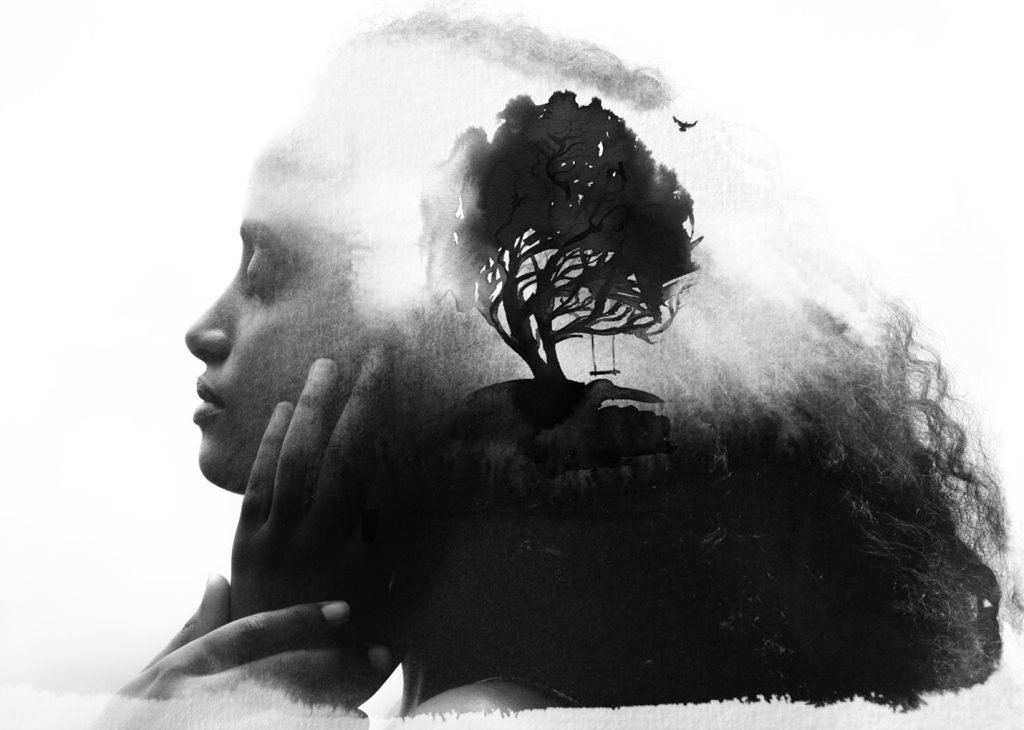Healing from childhood trauma can feel like a long, lonely journey through painful emotions, fear, and vulnerability. When you experience trauma in childhood, you adapt to keep yourself safe and manage the pain. As adults, we need to explore the traumatic events that created the adaptations, the function of the adaptations that you unconsciously developed, appreciate how they have served you, decide if they are still serving you, and then, if they aren’t serving you, we endeavor to let them go. These adaptations shape our thoughts, beliefs, behaviors, and emotions and affect our interactions. With tools, support, and a mindset, you can reclaim your sense of peace and begin the journey toward emotional and psychological recovery.
Understanding Childhood Trauma
Childhood trauma refers to distressing experiences during formative years that disrupt emotional and psychological development. Trauma can be defined in many ways. Trauma can be understood as cognitive dissonance between who you believe yourself to be in the world and something that happened to you. Another way to define trauma would be a stressful, painful, terrifying, or otherwise emotionally disturbing event that has happened to you, and where you are not in control.
When you are a child, you have almost no power and thereby no control. You are not capable of taking care of yourself or changing your circumstances. Therefore, you count on your parents’ unconditional love, approval, support, understanding, financial capability, and solid decision-making for emotional and physical survival. So, in our child brain, we need to have at least one good parent, and if you do not have one, your child brain will make you believe that you are the problem, rather than think you have no safe adult to get you through the world. Therefore, it is easier for some kids to adapt, bend, or contort into what their parent wants or need from them. Even for those who adapt by finding ways to rebel, blaze their trail, avoid their parents, and take care of themselves, there are scars (ingrained neural pathways creating behaviors, thoughts, beliefs) left.
For some folks, their parents were not the cause of their trauma traumatizing experience can be intentionally or unintentionally perpetrated by anyone in your family, community, or even other children.
Examples of trauma can include, but is not limited to:
- Physical, emotional, or sexual abuse
- Emotional or Physical Neglect
- Abandonment by or separation from caregivers
- Witnessing Violence (at home or in your community)
- Religious Trauma
- Identity-Based Trauma (Racial, Gender, Sexual, Ect)
- Immigration Trauma
- War or refugee trauma
- Bullying
How Childhood Trauma Affects Adults
Trauma doesn’t disappear when childhood ends. Instead, it often resurfaces in adulthood as unresolved thoughts, beliefs, behaviors, relationship patterns, or physical symptoms. The ACES (Adverse Childhood Event Study) proved that these events not only affect our mental health in adulthood, but also affect our medical health and longevity. According to the National Child Traumatic Stress Network (source), early trauma impacts the brain’s development, often leading to long-term mental health challenges such as anxiety, depression, or post-traumatic stress disorder (PTSD). As mentioned before, these responses or adaptations are not flaws or weaknesses; they are survival mechanisms the brain developed to cope with during childhood. While this information on top of the wounds of past experiences can feel overwhelming, please know that with courage and willingness, healing is possible. With tools, support, and a mindset, you can reclaim your sense of peace and begin the journey toward emotional and psychological recovery.
Trauma responses can manifest differently in every individual, but common patterns include:
Some of the most common effects of childhood trauma in adults include:
- Difficulty in Relationships: Struggling to form secure connections, fearing intimacy, pushing people away or exhibiting codependency.
- Chronic Stress or Anxiety: A constant state of worry or a sense of impending doom.
- Physical Symptoms: Headaches, stomach issues, or tension caused by the mind-body connection to unresolved trauma.
- Low Self-Esteem: A deep-seated belief of unworthiness or inadequacy.
- Avoiding: Avoidance of emotions, thoughts, people, places, memories
- Emotional Dysregulation: Struggling to manage intense emotions
- Fear of Abandonment: Difficulty trusting others or forming healthy attachments
- Hypervigilance: Constantly feeling “on edge” or anticipating danger
- Fawning: Unconsciously abandoning your wants, needs, or goals to please others
- Repressed Memories: Suppressing or blocking memories of traumatic events
- Emptiness: A feeling of there being a hole inside that no one and nothing can fill for very long
Steps to Heal from Childhood Trauma
Healing from childhood trauma is not a one-size-fits-all journey, but these steps can guide you in reclaiming your emotional and psychological well-being:
-
Recognize and Validate Your Experience
Acknowledging your trauma is the first step toward healing. Many adults downplay their childhood experiences or feel embarrassed about how those experiences still affect them. Remember: your feelings are valid, and recognizing their impact is essential.
-
Seek Professional Help
Trauma therapy can be transformative in addressing unresolved childhood pain. Therapists specializing in trauma-informed care can guide you through evidence-based methods such as:
- Trauma-focused cognitive-behavioral therapy (CBT): A short-term therapy that helps to identify and reframe self-blame/shame-inducing thought patterns. This is best as a first step in a therapy journey or for acute traumatic events, versus chronic, repetitive, or multiple traumatic events.
- Eye Movement Desensitization and Reprocessing (EMDR): A technique designed to process and reduce the emotional charge of traumatic memories while engaging in bilateral stimulation through right-to-left eye movements or tapping. Clients can share as much or as little of the traumatic memories as they wish with the therapist.
- Somatic Experiencing (SE) Therapy: SE is focused on how trauma shows up in our nervous system and how that dysregulation impacts life. SE is a body-oriented therapeutic model that is meant to help tolerate the distress of trauma response in the body and replace unhelpful adaptations or coping skills by engaging activities that help complete the defensive response in a healthy, effective manner.
- Narrative Therapy: Humans are driven to make meaning out of their lives by organizing their memories into stories. Narrative therapy helps you examine your values, contextualize your trauma, and rewrite those stories to help change how you emotionally respond. Professional guidance provides a safe environment to process past experiences and build coping mechanisms.
- Internal Family Systems (IFS) Therapy: IFS helps you identify the parts of you that have been traumatized or have been created by trauma to protect you from future trauma. These parts form a “family system” that works together to keep your core self-safe. Unfortunately, these parts don’t always work well together, causing internal conflict, and well-meaning protector parts may not be effective at protecting your adult self. Internal family systems help these parts work in harmony and help the core-self, the most genuine version of you, take the lead.
-
Practice Self-Compassion
Healing requires patience and kindness toward yourself. Replace self-criticism with affirmations like, “I am worthy of healing” or “My feelings matter.” Research shows that self-compassion lowers stress and increases resilience. Check out this link to a loving kindness meditation on our Instagram page.
-
Build a Support System
Surround yourself with people who understand and validate your experiences. This can include trusted friends, family members, or support groups. Sharing your journey with others reduces feelings of isolation and encourages.
-
Explore Mindfulness and Meditation
Mindfulness practices can help you stay present, focus your attention, and regulate emotions. Techniques like deep breathing, progressive muscle relaxation, and guided meditations can calm the nervous system and reduce anxiety. Meditation is beneficial for individuals dealing with childhood trauma responses in adulthood.
-
Reconnect with Joy, Creativity, and Movement
Trauma can often rob individuals of joy, creativity, or motivation to do anything. If you have not been engaging in activities you would typically enjoy, that’s called anhedonia. Reclaiming hobbies or trying new activities such as painting, dancing, or journaling can help you positively reconnect with yourself. Pushing through the malaise and discomfort of anhedonia is important because learning and movement that gets your heart pumping 20 minutes a day produces a brain protein called BDNF (brain-derived neurotrophic factor). It’s like fertilizer for your neural pathways – the byproduct is the greater ability to grow, change, focus, and it reduces rumination (going over and over negative thoughts).
-
Establish Boundaries
Boundaries allow you to focus on what truly nurtures your healing, and boundaries are crucial for protecting your energy and emotional well-being. This can mean saying no to unhealthy relationships or creating space from situations that feel overwhelming. Boundaries do not have to be inflexible, but they may need to become more rigid with people who do not respect them.
-
Spend Time with All of Your Parts (especially your inner child)
Parts work or inner child work involves acknowledging and nurturing the parts of yourself that were hurt during childhood or were created to protect the hurt parts. Offering love, validation, empathy, and hope to parts of yourself that might feel childlike/immature, hateful, angry, guilty or shameful unburdens these parts, whose only goal is to keep you safe. You might write to your younger self, talk to a picture of your younger self, or use visualization exercises that can help integrate past experiences into your healing journey.
When to Seek Help & The Role of Therapy in Healing Childhood Trauma
If your trauma symptoms feel unmanageable or interfere with daily life, seeking help is a courageous step. Watch for signs such as:
- Frequent flashbacks or intrusive thoughts.
- Inability to regulate emotions or prolonged depressive episodes.
- Feeling stuck or unable to move forward despite self-help efforts
Reaching out for professional support can accelerate healing and equip you with tools to navigate challenges.
Therapy is often the cornerstone of trauma recovery. A trained therapist can offer tailored strategies and provide a safe space to explore your past without judgment. Coping skills training (e.g., DBT Skills) can help you with practical tools to support you in your day-to-day life. Processing therapies, such as EMDR, Narrative Therapy, Somatic Experiencing and IFS, can help you gain insight, identify your parts, harmful beliefs, and adaptations to trauma, and begin to heal. Roots & Branches Therapy, for instance, offers a compassionate, client-centered approach designed to address complex childhood wounds.
Healing Takes Time: Be Patient with Yourself
Recovery from childhood trauma is a journey, not a destination. Some days will feel lighter, while others may bring up emotions you thought were resolved. The key is to remain consistent in your healing efforts and to celebrate progress, no matter how small. Healing is not linear.
Signs You’re Healing from Childhood Trauma
Healing isn’t linear, but there are markers that signify progress:
- Improved Emotional Regulation: You can process emotions without feeling overwhelmed
- Healthier Relationships: You feel secure and valued in your connections with others
- Greater Self-Awareness: You understand how your past influences your present behaviors.
- Resilience: You can bounce back from stress or setbacks more effectively
Conclusion
Healing from childhood trauma is a deeply personal journey that requires time, patience, and the right resources. By seeking professional help, practicing self-compassion, and building a supportive network, you can create a life that feels whole and meaningful despite past challenges.
Remember, your trauma does not define you. With every step forward, no matter how small, you are reclaiming your story and paving the way for a brighter future.
If you’re ready to take the next step in your healing journey, follow this link, to begin your path toward recovery and resilience.


